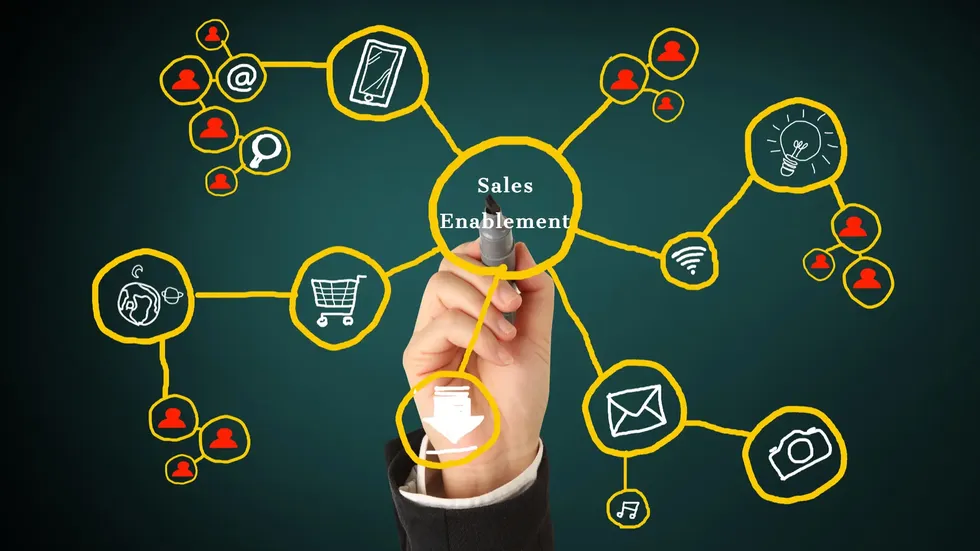The Role of Technology in Sales Enablement: Tools Every Team Needs
In the dynamic landscape of modern sales, technology has become an indispensable ally in empowering sales teams, optimizing processes, and driving business growth. Sales enablement, which focuses on equipping sales professionals with the resources and support they need to sell more effectively, heavily relies on innovative technologies to streamline workflows, enhance productivity, and deliver personalized customer experiences. This comprehensive article explores the critical role of technology in sales enablement and identifies essential tools that every sales team should consider integrating into their operations.
Understanding Sales Enablement Technology
Sales enablement technology encompasses a wide range of tools and platforms designed to support various aspects of the sales process, from prospecting and lead generation to closing deals and post-sale customer management. These technologies leverage automation, data analytics, and integration capabilities to empower sales teams with actionable insights, streamline communication, and facilitate informed decision-making.
Key Benefits of Using Technology in Sales Enablement
- Efficiency and Productivity: Automation tools streamline routine tasks such as data entry, email outreach, and follow-up, allowing sales professionals to focus more time on selling activities and building relationships with prospects.
- Personalization: Advanced analytics and CRM integrations enable sales teams to gather and analyze customer data, preferences, and behaviors. This information enables personalized communication and tailored solutions that resonate with individual prospect needs.
- Improved Collaboration: Cloud-based platforms and collaboration tools facilitate seamless communication and knowledge sharing among sales teams, enabling real-time updates, document sharing, and joint strategy development.
- Insights and Analytics: Sales enablement technologies provide valuable insights into sales performance metrics, pipeline health, and prospect engagement. These insights help sales managers and representatives make data-driven decisions and refine strategies to optimize results.
- Scalability: Scalable solutions accommodate business growth and evolving sales needs, adapting to changes in market dynamics, customer expectations, and organizational goals.
Essential Sales Enablement Tools
1. Customer Relationship Management (CRM) Systems
CRM systems are foundational tools in sales enablement, serving as centralized repositories for customer data, interactions, and sales activities. Key features include contact management, opportunity tracking, sales forecasting, and reporting. Popular CRM platforms include Salesforce, HubSpot CRM, and Microsoft Dynamics CRM.
2. Sales Content Management
Sales content management platforms enable sales teams to organize, share, and track sales collateral such as presentations, case studies, and product documents. These tools ensure that sales professionals have access to the latest and most relevant content to support their sales conversations. Examples include Seismic, Highspot, and Showpad.
3. Sales Engagement Platforms
Sales engagement platforms integrate email tracking, cadence automation, and analytics to optimize prospect outreach and follow-up. These tools enhance communication efficiency, track prospect engagement metrics, and provide insights to prioritize leads effectively. Examples include Outreach, SalesLoft, and Yesware.
4. Sales Enablement Analytics and Reporting
Analytics and reporting tools provide visibility into sales performance metrics, pipeline health, and individual rep productivity. These insights help sales managers identify trends, pinpoint areas for improvement, and make informed decisions to drive revenue growth. Examples include Tableau, Power BI, and InsightSquared.
5. Learning Management Systems (LMS)
Learning management systems facilitate the delivery of sales training and development programs, offering interactive courses, assessments, and certifications. LMS platforms support ongoing learning and skill development for sales teams, ensuring they stay updated on product updates, industry trends, and sales techniques. Examples include Cornerstone OnDemand, LearnUpon, and SAP Litmos.
6. Sales Enablement Automation
Sales enablement automation tools automate repetitive tasks such as data entry, lead scoring, and follow-up reminders. These tools improve efficiency, reduce manual workload, and ensure consistent follow-up with prospects, enhancing overall sales effectiveness. Examples include LeanData, Zoho SalesIQ, and Marketo.
Implementing Sales Enablement Technology
1. Assess Current Needs and Challenges
Evaluate your current sales processes, identify pain points, and determine areas where technology can drive improvements in efficiency, collaboration, and customer engagement.
2. Define Objectives and Success Metrics
Establish clear goals for adopting sales enablement technology, such as improving lead conversion rates, shortening sales cycles, or enhancing customer satisfaction. Define metrics to measure success and track progress over time.
3. Select and Implement the Right Tools
Research and select sales enablement tools that align with your organization's goals, budget, and technical requirements. Consider scalability, ease of integration with existing systems, and user adoption when making your decision.
4. Provide Training and Support
Ensure that sales teams receive adequate training and support to effectively use new technologies. Offer ongoing education on tool functionalities, best practices, and updates to maximize adoption and ROI.
5. Monitor Performance and Iterate
Regularly review performance metrics and user feedback to assess the impact of sales enablement technologies. Make data-driven adjustments and iterations to optimize processes, improve user experience, and achieve desired outcomes.
Case Studies and Examples
Illustrate the effectiveness of sales enablement technology with case studies and examples of organizations that have successfully implemented these tools. Highlight specific challenges addressed, solutions implemented, and measurable outcomes achieved, such as increased sales productivity, improved customer satisfaction, or accelerated revenue growth.
Technology plays a pivotal role in modern sales enablement, empowering organizations to enhance productivity, personalize customer interactions, and drive revenue growth effectively. By leveraging innovative tools and platforms tailored to their specific needs, sales teams can streamline workflows, optimize performance, and deliver exceptional customer experiences that differentiate their brand in a competitive marketplace.
Investing in the right sales enablement technology not only enhances operational efficiency but also equips sales professionals with the insights and capabilities they need to succeed in meeting evolving customer expectations and achieving long-term business success.
Embrace the transformative power of sales enablement technology to unlock new opportunities, foster collaboration, and drive sustainable growth in your organization. By prioritizing technology as a strategic enabler of sales excellence, you can position your team for continued success and leadership in your industry.






































